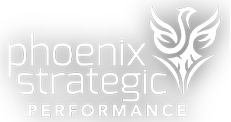Leadership Landscape: Beware of the External Horizon
Of the many facets of Change Management, this focuses on the leader, the environment, change, and the process responses required for success.
- Some leaders make things happen - The Proactives
- Some leaders watch what happens - The Passives
- Some leaders wonder what happened? – The Reactives
Our first focus will be on the knowledge and skill sets required to manage the elements of change coming from outside the organization. Think of it this way - no one else in the organization can do this but you, the leader.
Here’s what we mean by Change Management: Change Management deals with change that comes at an organization from the external environment. That external environment can be external to a division while still internal to the organization. From completely outside the organization, other changes can come from industry, competition, regulation, government, etc.
1. Some Leaders Make Things Happen – The Proactives
As a leader, you always need to have one eye always focused on any external factors that will impact your area. Your role is to anticipate those factors, prepare for them and then implement because of them. For everyone in a leadership role, there is no excuse for being caught unprepared by these forces of change. Yet, this unpreparedness is all too common.
Get Knowledge, Get Connected and Stay Relevant
The knowledge required for Change Readiness is access to continual lines of information regarding the external environment. Read everything you can. Attend conferences and stay networked with relevant external colleagues. You need to have a pulse on the total environment to stay current and relevant. If you don't, who else will? Optimize the Process of Change Management - Plan, Plan, and Plan Some More!
You can never over-plan change. The devil is in the details. These key project management skills are critical for success:
- Problem Solve
- Plan
- Involve everyone necessary all the time
- Make sure you have the most qualified people involved
- Create and continually manage constant communication from stakeholders down through every part of the organization
- Create an open environment
- Make deadlines
- Make Risk Analysis a way of life - Critical thinking and analyzing risk for everything possible
- Be realistic – if you’re not, everyone will figure it out!
- Be open to negative information
- Manage negative information
- Avoid Group Think – ALWAYS. This is harder than you think!
- Keep politics out of the process
2. Some Leaders Watch What Happens – The Passives
Some leaders have an eye on the horizon but live in a state of denial that the change will actually happen, or when change does come, then mistakenly believe that the deadline/timeframe isn’t a big issue.
Remember, nothing is a big issue until it becomes a big issue. Some of us can remember Y2K and all the systems challenges involved as January 1, 2000 approached. January 1, 2000 was the date. It wasn’t going anywhere. Yet, how many organizations, for years, delayed the necessary systems work that January 1, 2000 required? In businesses and governments worldwide, we all knew the date was approaching. The work did get done, but at what cost? When evaluated as a change project, the delay in implementing the change required last-minute, monumental resources globally to prepare for the date we all knew years before would come.
Leaders should have planned and prepared well in advance. By waiting too long, Y2K became an emergency of global proportions. The post-mortem on this monumental project should not solely be assessed by the fact that the project got done but;
- at what cost?
- could it have gone better?
3. Some Leaders Wonder What Happened - The Reactives
Some people simply don’t have their eyes that far out on the horizon. How come? Often, leaders are too inwardly focused. Imagine the kind of risk an organization can be exposed to. Just think about the Titanic! Nothing more needs to be said about that one! Any leader who is reactive to change should not be a leader.
Leaders – this one is on you! Everyone else knows it, even if you don’t!
The environment and process are only two aspects of Change Management. We invite you to download our change management case study to see how responding to change can dramatically improve your organization.





